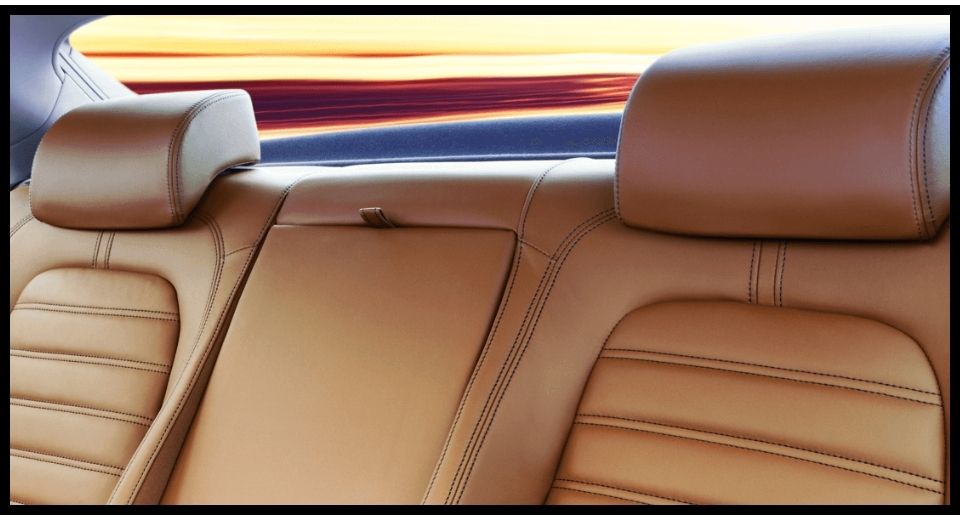
Feb 12, 2025

A new report published by Metastat Insight throws light on the global Automotive Interior Leather Market and reveals the subtleties behind the niche industry. The research focuses on material, manufacturing process, and evolving consumer expectations while unveiling subtle trends in the field of automotive interiors. With automobile manufacturers worldwide continually pushing the boundaries of design and technology, the demand for premium interior finishes, specifically leather, is evolving based on both functional and aesthetic considerations.
Luxury has long been the hallmark of the automotive industry, and leather interiors remain synonymous with sophistication and comfort. However, the expectations surrounding automotive leather have changed dramatically over the years. Not only will leather look fabulous, but modern consumers increasingly demand sustainability and durability in leather besides innovative designs and technology. Today's manufacturers cannot help but innovate along such lines--not only to find new, effective materials to produce the end product but also to discover new means of processing for superior results.
One of the more interesting trends in the report is the growing use of environmentally friendly and sustainable materials in the production of leather for automotive purposes. With global environmental awareness increasing, car makers are looking to alternative tanning methods and source practices that bring down ecological impacts. For instance, vegetable tanned leather is gaining popularity as it minimizes the use of harmful chemicals applied in the manufacture of leather. This increases the trend of recycled and synthetic leathers in vehicle interiors, marrying luxury with environmental responsibility.
Regional aspects also play an important role in perception and usage of automotive leather. For instance, in regions like North America and Europe, where luxury vehicles dominate a significant portion of the market, the demand is majorly for high-quality, pure leather interior alone. Contrary to these, in regions of the Asian-Pacific that is highly urbanized and having the emerging middle-class who is looking for changing his consumer behavior towards more affordable fashionable interior products of artificial leather also imitating an actual feel of leather. To cope with all these regional difference producers have to be flexible in their responses for market demand also.
The automotive interior leather Market also changes profound from technological Aspects. Technological changes, in the case of leather processing, are advanced dyeing techniques and finishes, which will bring more resistant products that don't fade fast. Moreover, smart technologies for vehicle interiors demand the development of leathers that can host features such as heated seats, sensor integration, and touch-sensitivity without any compromise on durability or aesthetics. A remarkable step forward is the hybridizing of conventional material with cutting-edge technology in order to produce advancements in automotive interior progress.
Further, the nature of the requirements of consumers is dynamically inter-related with governmental regulatory policies. Hence, stringent legislation on emissions, as well as the use of hazardous substances has compelled manufacturers towards being more and more environment friendly. This is beyond the response of legal requirements; it is the reflection of change in consumer values, as customers buying cars consider environmentally friendly products. Therefore, leather manufacturers now adopt cleaner production processes, water-based finishes, and less energy consumption during manufacture, in order to meet consumer demand and compliance with regulatory demands.
Another reason for the current market influence on leather demand comes from the booming electric and hybrid vehicles. These cars tend to have a forward-thinking, environmentally aware design philosophy and interior design is no exception. Due to this, the market is seen to shift more towards sustainable products that do not compromise on luxury feel, as traditionally associated with leather interiors. It has made the manufacturer innovate and develop new leather product lines that comply with the demands of electric vehicle interiors-from lightweight materials to better thermal properties.
The Automotive Interior Leather Market is very competitive, has an ongoing innovation process, and has strategic cooperation. Established leather suppliers are partnering with car manufacturers to design special interior products co-developed depending on the essence of both the brand and consumer needs. Indeed, this more collaborative approach opens avenues for even more tailored solutions and introduction of disparate designs, which only makes the leather even more prominent in a driving experience. There are in addition new competitions by the players operating in the business with sustainable material offerings, which bring new concepts and challenge the original things, making a dynamic and competition-scenario market.
As it continues in its evolution, no one has ever questioned that design and style play an important role. Leather lends itself to the highest degree of versatility imaginable, opening new texture, color, and pattern possibilities that will make the interiors truly distinguishable. This creative potential is tapped into to craft not only luxurious but also trendy for the purpose of the broader inside design considerations within the auto world. From minimalist, monochromatic themes to bold, contrasting color schemes, leather use is at the heart of these varied design visions.
Consumer behavior has also become an importance driver for shaping market trends. With the advent of digital channels and social media, car buyers are becoming more intelligent and choosy than ever before. Reviews, testimonials, and online forums provide a lot of information that builds up the purhasing decision, which speaks volumes about buying premium features like leather interiors. This heightened awareness has placed additional pressure on manufacturers to deliver products that meet high expectations for quality, durability, and sustainability.
All in all, the global Automotive Interior Leather Market, as defined by Metastat Insight, is sailing through a complex landscape defined by innovation, sustainability, and changed preferences of the buyer. The technological advancement and the regulatory pressure continue to force irreversible changes within this sector. As manufacturers and suppliers adapt to these changes, the future of automotive leather promises to be one of both tradition and innovation, balancing the timeless appeal of luxury with the pressing need for environmental responsibility and technological integration.
Drop us an email at:
Call us on:
+1 214 613 5758
+91 73850 57479